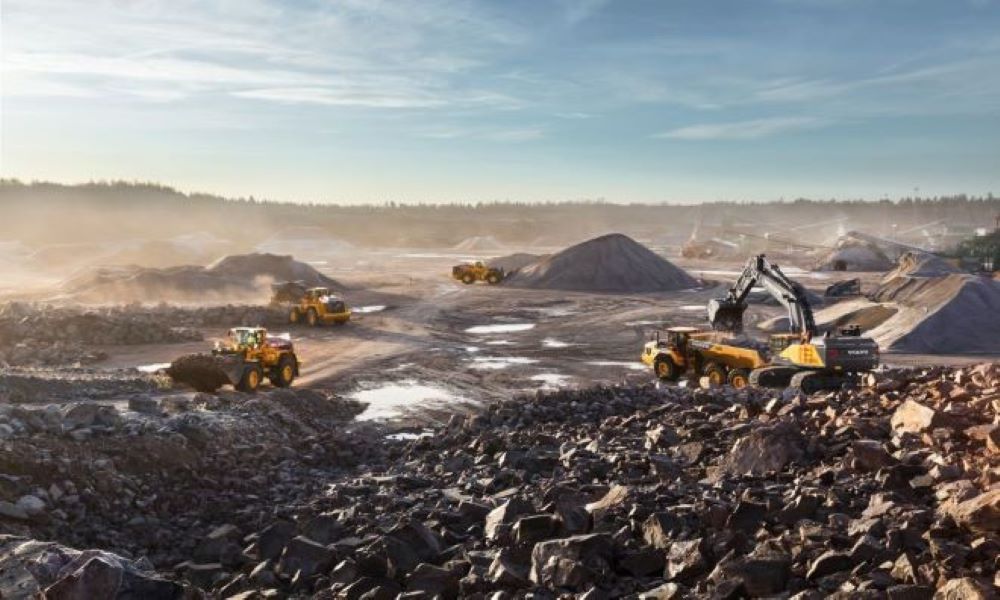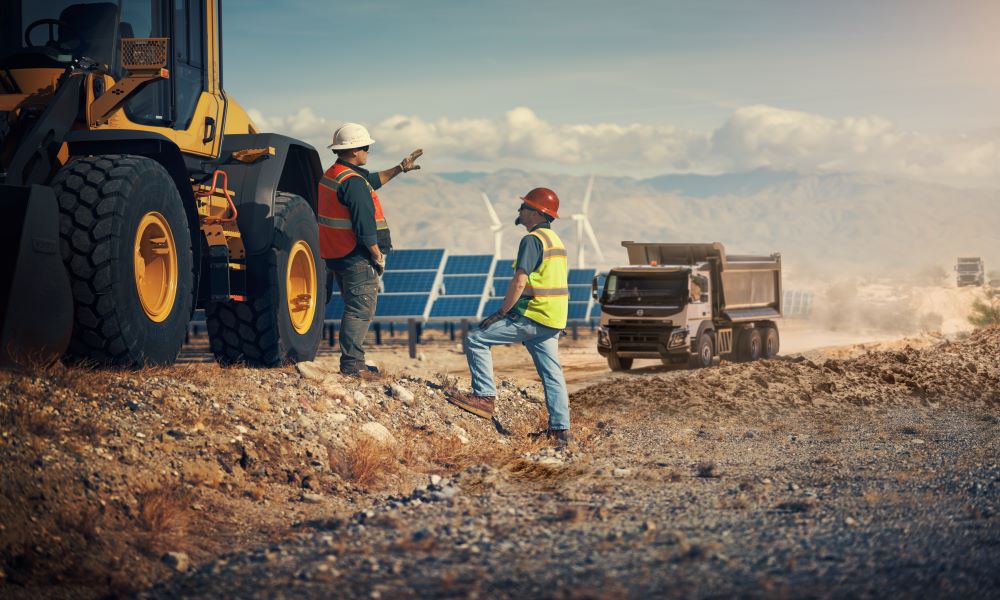Nations across the Middle East are increasingly seeing the construction industry both as a stimulus for the economy and an opportunity to tackle the issues of air pollution and climate change. The Saudi Arabian government, in particular, has created the National Transformation Project and Vision 2030 strategy to integrate sustainable development goals into the national planning process.
By 2030, Saudi Arabia is planning to invest approximately US$1 trillion in the country’s non-hydrocarbon sector, with key projects including Neom City, the Red Sea Project, Qiddiya Entertainment City, King Abdullah Financial District, and Amaala.
On these projects, contractors are required to demonstrate an in-depth understanding of their impact on the environment, and innovate their methods and processes to reduce energy, emissions, and resources to an absolute minimum. For approximately the last decade, electromobility has been considered a silver bullet by many to eliminate carbon emissions from the construction process. However, there is still a way to go until the technologies for larger electric construction equipment – and the renewable energy infrastructure to power them – reaches maturity.
Change starts here
That is why Volvo Construction Equipment (Volvo CE) has launched a CO2 Reduction Program to help construction companies in the Middle East achieve a significant and immediate decrease in the carbon footprint of their operations using technologies widely available now. At the same time, Volvo CE can also simulate the right fleet make-up and charging infrastructure for contractors’ sites to ensure a smooth and efficient transition to electromobility when the moment comes.
“With each new machine generation, our Technology teams strive to make them more fuel efficient and give off fewer CO2 emissions. This is a key differentiator for Volvo in the market, but the quality of the powertrain is not the only factor impacting fuel consumption and emissions. It is also the way the machine is used on the jobsite. Is it left idling for longer than necessary? Could it take a more direct driving route? Could the operator drive more efficiently? Luckily, these are all questions we can address to help construction companies achieve even lower fuel consumption and emissions from their Volvo machines,” explains Ilkay Fidan, Commercial Manager for Sales Region International at Volvo CE.

Structuring the conversation
According to Ramez Hamdan, Managing Director of Famco, these are precisely the discussions the Volvo dealer for United Arab Emirates, Saudi Arabia and Bahrain has been having with customers recently. “We see a huge desire in the market to decrease fuel consumption and emissions even further. Our customers are looking into waste and inefficiency in their operations and are curious about how the CO2 Reduction Program can make a difference,” he says.
Although the CO2 Reduction Program itself is new, the principles and suite of Volvo services underpinning it are not. CareTrack, the Volvo proprietary telematics system, for example, was first launched in 2006. What the CO2 Reduction Program offers is one cohesive solution that bundles Volvo services together according to customers’ needs and follows a simple four-step methodology to ensure success.
“The CO2 Reduction Program is a new way of thinking about Volvo services and is a valuable tool for having meaningful conversations with customers about their goals for carbon neutrality and how our services can contribute, as well as demonstrating their impact and return on investment,” Hamdan adds.

CO2 reduction in four simple steps
- Insights
Volvo CE and its dealers first seek to establish the customer’s current carbon emissions using telematics data from connected machines to set a baseline for measurement.
- Analyze
Next, the data is analyzed and a site study conducted to understand how material flow, fleet composition, and operator behavior impacts emissions at the customer’s site and identify opportunities for improvement. Volvo CE then illustrates the actions that can be taken and sets targets.
- Improve
Once the customer agrees the recommended packaged of services and proposed outcomes, Volvo CE and the dealer then support the customer to implement them.
- Sustain
Finally, Volvo CE and the dealer measure the KPIs and the CO2 per ton reduction, give feedback to the customer in a way that is easy to digest, and set new targets to sustain the improvements.
“The four-step process should be a continuous cycle to avoid slipping back into old habits and find new ways to reduce emissions even further in the future. As for the services implemented, these could involve digital, training, or consultancy services,” Fidan explains.

Maximizing fill, minimising traffic
Volvo CE’s Efficient Load Out digital service, for example, can significantly help to lower emissions on mass excavation projects by ensuring a 95-99% fill rate on each pass and, therefore, reducing the number of truck passes and the amount of traffic on site.
Truck drivers download the Efficient Load Out app prior to arriving on site and register the license plate number and maximum payload of their vehicle. The machine operator logs into the same system to see the list of trucks on site waiting to be loaded and calls an available truck to be loaded at the press of a button. The truck is then filled to its optimal payload according to the weight and type of material registered on the system.
Efficient Load Out was developed in 2019 in partnership with Swedish contractor NCC, which was looking to optimise the excavation of over 2 million tonnes of material for an underground tunnel and bridge over the E6 motorway in Gothenburg. NCC connected three excavators and 20 trucks to Efficient Load Out, which over 12 months reduced site traffic by 10%. This equated to 1,600 fewer truck journeys, 32,000 fewer litres of fuel consumed and 85 tonnes less of CO2 emitted.
Connected Map is another digital service that can help to significantly lower emissions by minimising traffic on site. This global positioning service provides a visual overview in real time of the position of every machine vehicle, and person on site that is connected to the App, even if they are non-Volvo. It works by extracting the positioning data from machine telematics or Android/iOS devices with SIM cards and uploading it to a cloud-based Volvo platform, where it is then visualized on the Volvo Co-Pilot screen in a machine cab, on an Android/iOS device, or via the Office Portal web portal.

30% more efficient operation
Operator training can also have a significant impact on emissions. Several years ago, Volvo CE conducted a study of 80 operators ranging from rookie to professional to determine the impact of operator skill on ton per hour and tonne per liter performance. The results showed a difference of up to 30% in fuel consumption even among the professional operators.
To establish the right type of training for a customer, Volvo CE carries out an initial assessment and then recommends options ranging from basic to advanced, such as the EcoOperator Program. After the training has taken place, Volvo CE can monitor and follow up on the operators’ improvements as long as their machines are connected to CareTrack.
Fleet and site optimisation
Finally, Volvo CE may recommend a consultancy service such as Site Simulation. By modelling a customer’s site, Volvo CE can calculate the optimum number and capacity of machines and driving routes to minimize traffic and distances travelled on site, as well as unnecessary fuel consumption and emissions through idling.
“We don’t need to wait for the arrival of electric machines and green charging infrastructure in the Middle East to start making a difference,” Fidan concludes. “Using the new CO2 Reduction Program as our guide, there is already so much we can do support customers in this respect with our existing portfolio of services, as we prepare them for the transition to emobility in the future. It is what our customers have been asking for and will bring valuable results for both our customers and wider society.”
